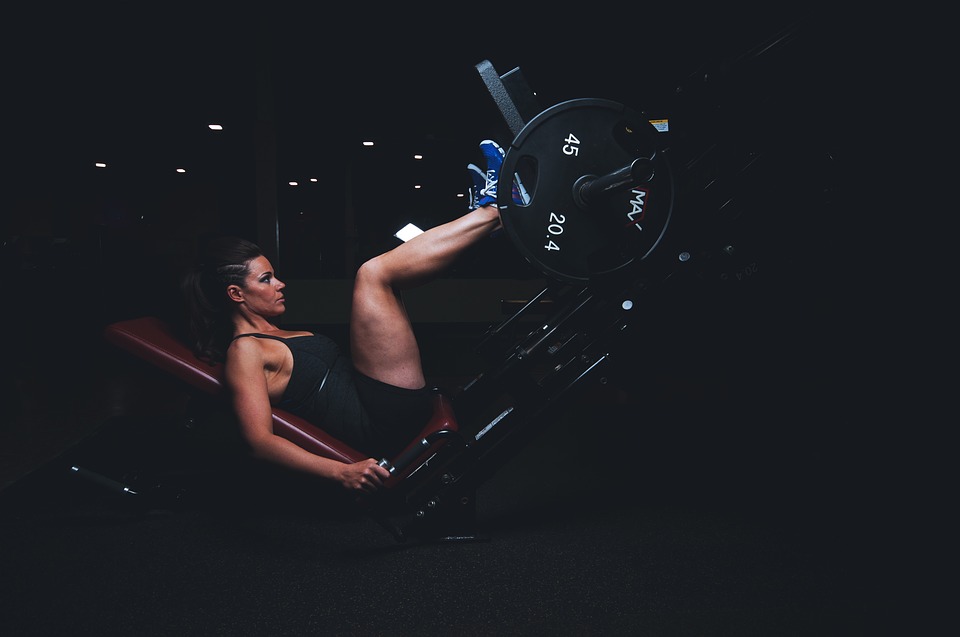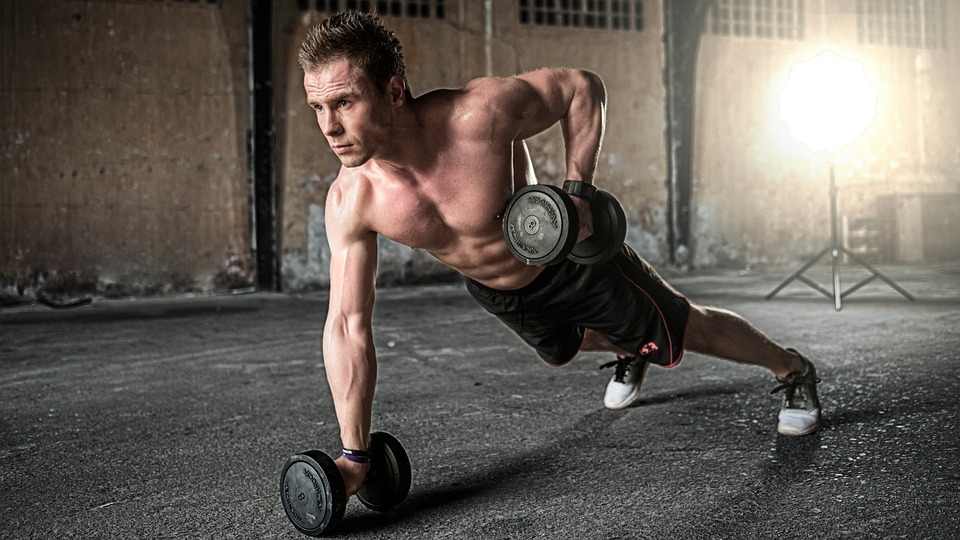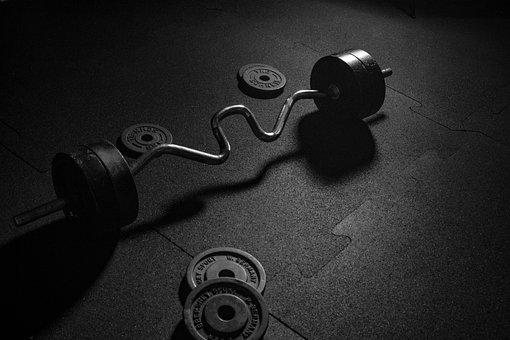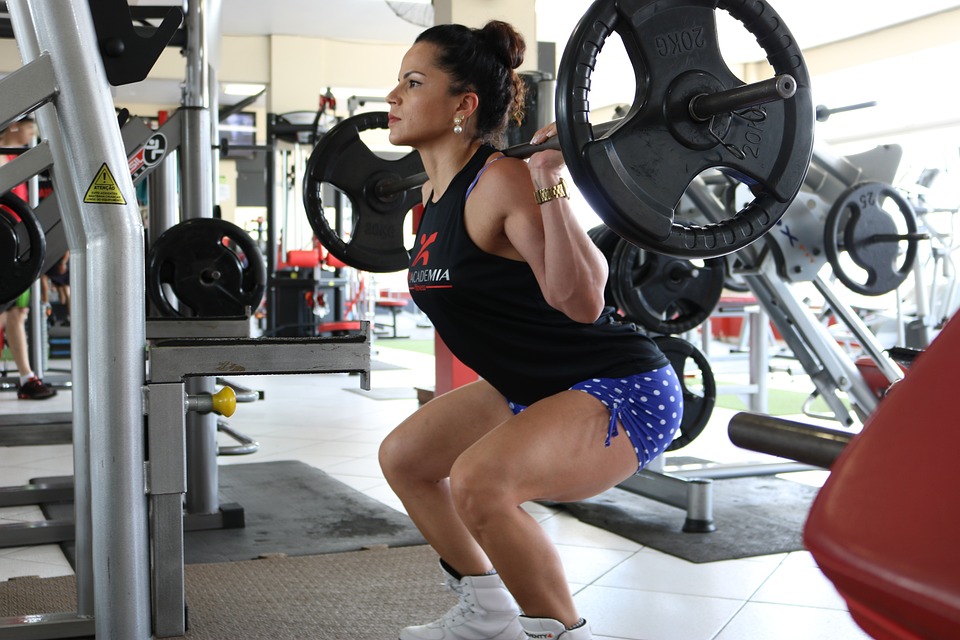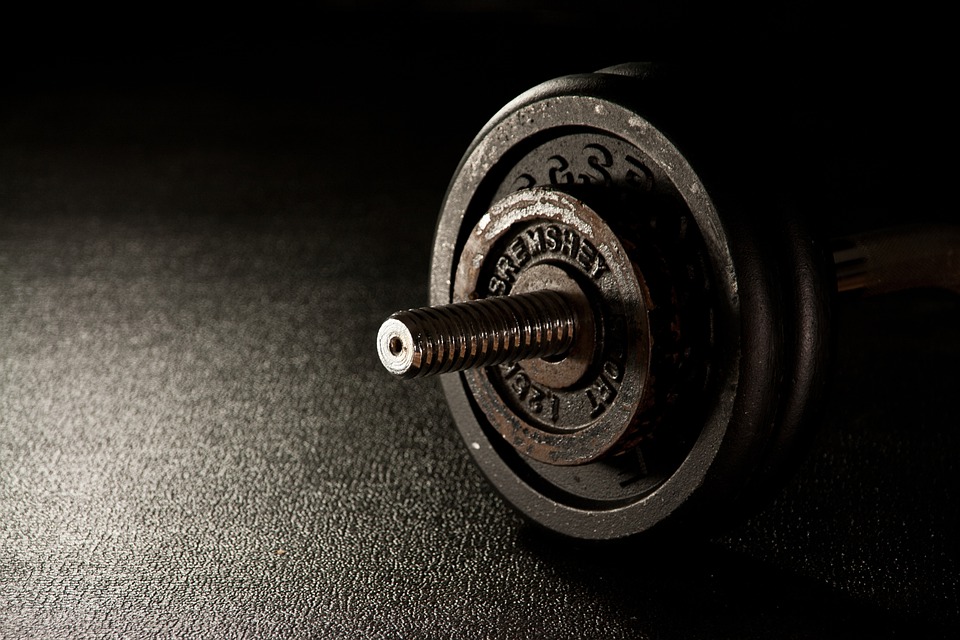
If you have been lifting weights for a couple of years, you have probably noticed that it becomes increasingly difficult to gain muscle mass. In order to keep seeing results, you need to train harder and smarter. This article provides tips on how to take your workouts to the next level and see more muscle gains.
Tip #1: The Burn-Out Set
After your final set of any given exercise, push your muscles to their limit by completing 25-30 reps with a very lightweight. A Japanese study found that, by doing this, you can increase strength and muscle cell size by pumping more blood and water into the muscle.
Most people think they’re doing a move correctly when they’re not. The second tip to get the most out of your chest workout is to take your delts out of the equation. This means that you should not be using your shoulders to assist in the movement and should be keeping your chest muscles engaged throughout the entire set.
You see fewer guys with well-developed upper pecs and more with large front delts.
Do you think there might be a connection there?
Initially, your front delts are going to be much stronger than your pecs. There definitely is a difference between front delts and chest press – especially on the incline press. You want to try to limit the work your front delts are doing as much as possible so your pecs can do more of the work. In the beginning, your front delts will be much stronger than your pecs.
Tip #2: In order to do this effectively, you need to have the right angle for your bench.
You want to be somewhere in between, probably at about a 45-degree angle. The average guy has the bench set too high. If the bench was at a 90-degree angle, you would be doing a shoulder press. If it was flat at a 180-degree angle, you would be doing a flat chest press. You want to be somewhere in the middle, at about a 45-degree angle.
The lower the angle you use for the incline bench, the more your chest will be involved. However, most guys set the angle at 45 degrees or higher, which minimizes the involvement of the front delts.
So, what’s the ideal angle?
30 degrees.
This exercise is best done at 30 degrees because it will target your pecs more. You won’t be as strong because you won’t have the extra help from your shoulders, but if you want to grow your upper chest, this is the best exercise to do.
If you set your incline to 30 degrees the next time you do a chest workout, you will notice more involvement from your pecs and they will be much sore the following day.
Tip #3: Perform Breakdown Sets
The Breakdown training method is a way of working out that targets all the different types of muscle fibers in one set. It was created by Dr. Fred Hatfield, the founder of the International Sports Sciences Association.
Perform three-phase sets as follows:
- Do 4-6 reps with 85% of your one-rep max
- Change to a weight that is 20 percent lighter and perform 10-15 reps.
- Change to a weight that is 50 percent lighter again and perform 25-30 reps.
There is no rest period between the phases of the set. Stimulating muscle growth by hitting the full spectrum of fast and slow-twitch muscle fibers.
The fourth tip to gaining size is to focus on the basics. Exercises like the bench press, squat, and deadlift are key in packing on muscle. The fourth tip for gaining size is to focus on compound exercises like bench presses, squats, and deadlifts. These exercises are key in packing on muscle.
The main exercises you should focus on are the squat, deadlift, bench press, overhead shoulder press, and barbell curl. These exercises are very effective in helping you build muscle. You should do these exercises first in your workout when you have the most energy and use weights that will challenge you and help you get stronger (4-6 reps) or bigger (8-12 reps).
Tip #4: Use Negatives
Negative reps, where you lower the weight very slowly, can actually contribute to more muscle soreness and tissue breakdown than positive reps. You don’t want to overuse this technique, so you should limit negative training to once every few weeks per body part.
Muscles grow when they are worked against resistance, and one of the most effective ways to do this is to use negatives. When you lower a weight slowly, your muscles are working hard to control the movement. You can use negatives to boost your muscle gains by working against resistance. One of the most effective ways to do this is to slowly lower weight. This way, your muscles have to work hard to control the movement.
- Put 20 percent more weight on the bar than you normally would and have your partner assist you when lifting the weight while you focus on the negative, Aim to take 3-5 seconds to lower the weight.
- Do negatives at the end of your set. Once you reach positive rep failure, have your partner help you with a couple of extra forced reps while you lower the weight as slowly as possible. Remember those speed counts – do ultra-slow reps and you’ll ignite dormant muscle fibers.
5 Frequently Asked Questions On Muscle Building
- How Much Resistance Is Best For Building Muscle?
Lifting heavy weights will not cause you to gain weight if you do not eat more calories than you burn. While lifting heavy weights can help you build muscle faster, it is not always necessary. You can also build muscle by using light weights or just using your body weight.
Weight Training
You should focus on lifting the heaviest weight you can for 8-12 reps in order to build an initial amount of muscle. The amount of weight that is considered to be “heavy” will vary from person to person, depending on their natural strength.
The most significant gains in muscle size come from lifting weights that you can only lift 8-12 times. Depending on the exercise and your fitness level, this is equivalent to 60-80% of your one-rep max (the maximum amount of weight you can lift in a single repetition).
You need to keep adding more weight if you want to keep gaining muscle. Check your progress every 3-6 weeks, and if 8-12 reps are becoming easy, add more weight. Otherwise, you will stop seeing progress.
Resistance Band And Bodyweight
There is a common misconception that the only way to stimulate muscle growth is by lifting heavy weights in a gym. However, this is not the only way to build muscle. You can achieve similar results by doing more reps and sets.
With the right exercises, you can build strong muscles without any extra weight. These exercises can be done at home or anywhere else.
You need to train until you can feel the muscles being challenged in order to see results. With weights, you can add on resistance as needed, but with bodyweight and resistance bands, the resistance is static. To make the workout more intense, you need to do more reps and sets. You might also need to train more frequently during the week.
The advantages of bodyweight and resistance band training are that you may feel less sore than if you worked out with weights, and it can be safer since the movements are more controlled.
- How Many Sets Per Exercise Are Right For You?
This period can be as short as the time it takes to catch your breath and wipe the sweat from your brow, or as long as a couple of minutes. A set refers to the number of repetitions of a particular movement that you complete. There is usually a recovery period in between sets. This period can range from a few seconds to a couple of minutes.
The text is saying that the equation for figuring out how many sets and reps to do is: [# of sets] x [# of reps] = 1 work set
An example of this would be three sets of eight push-ups each, with a rest interval of one to three minutes between sets.
What is the best number of sets to do in strength training? This varies depending on how fit you are.
Newcomers and those just starting out will see benefits from doing a single set of each exercise. However, athletes who are more advanced will see better results from doing multiple sets of each exercise. This is because a single set is not enough to put enough stress on the muscles to cause them to adapt. Therefore, multiple-set training is recommended for those who are more advanced.
You need to work your muscles until they are fatigued in order to see serious gains. This will trigger your body to produce more muscle in order to be able to achieve the same movement. If you want to bulk up in a specific area, you need to do sets that focus on that area.
If you want to keep building muscle after the initial phase, or if your goal is to build muscle quickly, then a good rule of thumb is 4-6 sets.
Progressively overload your muscles in each set. Start with a lighter weight for your first set and then add more weight with each set. You’re doing it right if you get close to failure or fail to reach your goal number in your final set.
- How Many Reps Per Set Are Right For You?
How many repetitions (reps) per set varies depending on the specific exercise and fitness goals. For example, 30-60 jumping jacks would be reasonable; however, that would be far too many push-ups for most people.
An ideal rep range for building muscle is 6-12 repetitions of the same exercise. If you can complete 20 repetitions of an exercise with good form, add another set and drop the reps back down to 6-8 repetitions per set. Once you can complete all sets with good form, add more repetitions.
- Do I Need To Rest Between Sets?
It depends on your goals!
If you want to build one specific muscle by doing multiple repetitions of the same exercise, you should rest for 60 seconds to 3 minutes in between sets. You’ll know you’ve rested enough when you feel like you can start the next set with fresh energy. The idea is that if you take the time to rest, you’ll be able to lift more weight each time.
You can do multiple sets of different muscle groups at once by supersetting. Supersetting means doing a set of exercises for one muscle group or side of the body, then immediately doing a set of exercises for the opposite muscle group during your rest time. So, you switch from one side to the next with little rest. For example, doing a set of push-ups and then going straight into a set of supermans. The two exercises oppose the same muscle group (think pushing versus pulling movements).
If you want to build muscle and lose fat, circuit training, and supersets are a great choices. Circuit training means doing one exercise after another with no rest in between. This method of training works the cardiovascular system more than strength training alone.
- How Many Times A Week Should You Strength Train?
Exercise-induced soreness is commonly referred to as Delayed Onset Muscle Soreness (DOMS). It is important to start off slowly if you are new to strength training, or are coming back after a long break. Doing too much too soon can result in DOMS, which can make it difficult to work out multiple times or lift heavy loads – both of which are counterproductive to your goals. Make sure you understand the benefits of super-compensation and the difference between overtraining.
The soreness from strength training, called DOMS, is typically at its worst one to two days after the initial session. If soreness persists, another strength training session two to three days later can help alleviate DOMS. Even a gentle walk is enough to get the blood flowing, muscles oxygenated, and reduce lactate build-up.
If you’re an athlete who has never done strength training before, you should aim to do one strength-training workout each week during your first week. After that, you should do two to four more workouts that complement the strength-training ones. Anything that makes you sweat counts, whether it’s bodyweight training, yoga, Pilates, running, biking, swimming, or taking dance classes.
After you’ve achieved initial growth, you only need two dedicated strength-training sessions a week. For best results, do a full-body workout that covers all the major muscle groups. This type of workout is called “high-frequency training.”
There are several full-body workouts available on the Adidas Training app, including; Full Body with Weights (using dumbbells or water bottles as weights), 8-Minute Fully Body Workout, 10-Minute Tabata HIIT, and more!
In contrast, split training is an excellent way to make sure you have enough time for muscle recovery. Each major muscle group will work twice a week if you follow a two-body-part split four days a week. The most typical type of split training is dividing your weekly workouts into one day for the upper body, one day for the lower body, and one day for the total body.
A common way to use this feature to split workouts would be to target the legs and lower body one day of the week, then target the arms and upper body the next day, then go back to the lower body. This type of training is only for advanced athletes because it adds significant training stress, which is needed to promote further muscle growth due to the principle of progressive overload.
As you get stronger, you can work out more frequently without wearing your muscles down. Just make sure to increase your protein intake as you train more.
Many athletes use “training blocks.” They’ll train harder for 3-4 weeks and then take a recovery week every third or fourth week depending on experience level and injury propensity.


